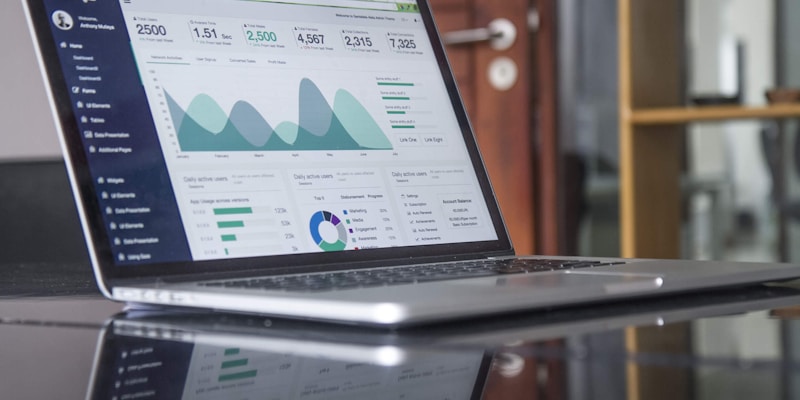Complete Guide to QR Code Analytics & Performance Tracking
Master QR code analytics with our comprehensive guide. Learn to track scans, analyze user behavior, measure ROI, and optimize campaigns with real-time insights and detailed statistics.

Unlock the full potential of your QR codes with comprehensive analytics. Learn how to track, measure, and optimize your QR code campaigns for maximum ROI and user engagement.
QR Code analytics is the practice of collecting, measuring, and analyzing data from QR code interactions. Unlike static QR codes that simply redirect users to a destination, trackable QR codes capture valuable insights about user behavior, engagement patterns, and campaign performance.
Modern QR code analytics platforms provide real-time tracking capabilities that help businesses understand not just how many people scanned their codes, but when, where, and how those interactions occurred. This data-driven approach transforms QR codes from simple links into powerful marketing and analytics tools.
The analytics process involves creating dynamic QR codes that redirect through a tracking server before reaching the final destination. This intermediate step allows the system to capture and log detailed information about each scan, creating a comprehensive dataset for analysis and optimization.

The fundamental metric showing how many times your QR code has been scanned. Track daily, weekly, and monthly scan volumes to understand engagement trends.
Count of individual users who scanned your QR code, helping you understand your actual reach versus repeat engagement from the same users.
Location data showing where your QR codes are being scanned, from country and city level down to specific regions for local campaigns.
Detailed timing data including peak scanning hours, days of the week, and seasonal trends to optimize your campaign timing.
Information about devices used to scan QR codes, including mobile vs. desktop, operating systems, and browser preferences.
Track how many scans lead to desired actions like purchases, sign-ups, or downloads to measure your QR code campaign effectiveness.
Instead of encoding your final URL directly, a dynamic QR code contains a unique tracking URL that redirects through an analytics server.
When scanned, the tracking server captures timestamp, location, device information, and user agent data before redirecting to your destination.
Analytics data is processed and made available in real-time dashboards, allowing for immediate insights and campaign adjustments.
The entire process happens in milliseconds, ensuring users reach their destination quickly while comprehensive data is collected behind the scenes.

- Product Information: Track which products generate the most QR scans and optimize product placement accordingly.
- Store Performance: Compare QR code engagement across different store locations and identify top-performing outlets.
- Customer Journey: Analyze the path from QR scan to purchase, identifying drop-off points and optimization opportunities.
- Attendance Tracking: Monitor real-time event attendance and identify peak entry times for crowd management.
- Engagement Zones: Track which event areas or booths generate the most QR interactions.
- Content Performance: Measure engagement with event schedules, speaker bios, and networking features.
- Digital Menus: Track menu access patterns and identify the most viewed items for inventory planning.
- Table Turnover: Analyze dining patterns and optimize table management based on QR scan timing.
- Promotional Campaigns: Measure the effectiveness of special offers and seasonal promotions.
- Campaign Attribution: Track which marketing channels drive the most QR code engagement.
- A/B Testing: Compare different QR code designs, placements, and calls-to-action.
- ROI Measurement: Calculate precise return on investment for QR-enabled marketing campaigns.
Retail Chain: Increased customer engagement by 45% by analyzing QR scan patterns and optimizing product placement in high-traffic store areas.
Restaurant Group: Reduced wait times by 30% through QR analytics insights that helped optimize peak hour staffing and menu ordering processes.
Event Organizer: Improved attendee experience and increased sponsor ROI by 25% using location-based QR analytics to optimize booth placement and networking opportunities.
Replace guesswork with concrete data. QR analytics provide quantifiable insights that help you make informed decisions about marketing strategies, content placement, and user experience optimization.
Calculate exact return on investment for your QR campaigns by tracking conversions, engagement rates, and customer acquisition costs. Connect marketing spend directly to measurable business outcomes.
Understand not just how many people engage with your QR codes, but when, where, and how they interact. Use these insights to optimize timing, placement, and user experience design.
Monitor campaign performance in real-time and make immediate adjustments. Identify what's working and what's not, allowing for quick pivots and continuous improvement.
Track unusual scanning patterns that might indicate fraudulent activity. Monitor for bot traffic and implement security measures based on analytics insights.
Understand how your QR campaigns perform across different geographical regions, time zones, and cultural contexts. Optimize for local preferences and peak engagement times.
- Set up consistent tracking parameters across all QR campaigns for accurate comparison
- Use UTM parameters to integrate QR analytics with your broader marketing analytics
- Implement conversion tracking to measure business impact beyond just scans
- Regular data audits to ensure accuracy and identify any tracking issues
- A/B test different QR code sizes, placements, and surrounding content
- Optimize for mobile experience since 95% of QR scans happen on mobile devices
- Use geographic data to optimize placement and timing for different locations
- Continuously monitor and adjust based on real-time performance data

Focusing solely on the number of scans without considering unique users, conversion rates, or engagement quality provides an incomplete picture of campaign success.
Failing to analyze location-based performance data means missing opportunities to optimize placement and target high-performing geographical areas.
Analyzing all QR code data in aggregate without segmenting by campaign, location, or time period makes it difficult to identify specific optimization opportunities.
Not establishing performance baselines before implementing changes makes it impossible to measure the impact of optimization efforts accurately.
Using different tracking parameters or analytics tools across campaigns prevents accurate comparison and consolidated reporting.
Waiting too long to act on analytics insights means missing opportunities for real-time optimization and campaign improvements.
| Feature | MetricQR | Basic Tools | Enterprise Solutions |
|---|---|---|---|
| Real-time Tracking | ✅ | Limited | ✅ |
| Geographic Analytics | ✅ | Basic | ✅ |
| Device Analytics | ✅ | No | ✅ |
| Cost | Free | Free - $10/mo | $100+ /mo |
Modern QR code analytics platforms provide highly accurate data with 99%+ reliability. The tracking occurs at the server level before redirection, ensuring comprehensive data capture. However, users with strict privacy settings or VPNs may occasionally show generic location data.
Yes, professional QR analytics platforms like MetricQR use optimized redirect servers that add less than 100ms to the scanning process - virtually imperceptible to users. The tracking happens seamlessly in the background without affecting user experience.
Static QR codes contain the final URL directly and cannot be tracked. Dynamic QR codes contain a tracking URL that redirects to your destination, enabling comprehensive analytics. Dynamic codes also allow you to change the destination URL without reprinting the QR code.
While you can see immediate data from QR scans, meaningful analytics typically require at least 2-4 weeks of data collection to identify patterns and trends. For seasonal businesses or event-based campaigns, consider running parallel campaigns to gather comparative data more quickly.
Most professional QR analytics platforms offer API access and integration capabilities with popular marketing tools like Google Analytics, CRM systems, and email marketing platforms. This allows for consolidated reporting and deeper insight correlation.
QR analytics collect anonymous usage data similar to website analytics. Ensure compliance with GDPR, CCPA, and other privacy regulations by providing clear privacy notices and obtaining necessary consents. Most platforms automatically anonymize personal data while preserving analytical value.
Take control of your QR campaigns with powerful insights that drive results. MetricQR provides everything you need to track, analyze, and optimize your QR code performance.
Benefits you'll get:
- Monitor performance in real-time
- Identify peak engagement times and locations
- Optimize for your users' preferred devices
- Make data-backed marketing decisions
- Measure and improve ROI continuously
Ready to unlock the power of QR code analytics? Start your free MetricQR account today and transform your QR strategy with comprehensive tracking and insights.
- What are QR Code Analytics?
- Essential QR Code Metrics to Track
- How QR Code Analytics Tracking Works
- Real-World QR Code Analytics Use Cases
- Industry Success Stories
- Comprehensive Benefits of QR Code Analytics
- QR Code Analytics Best Practices
- Common QR Code Analytics Mistakes to Avoid
- QR Code Analytics Tools Comparison
- Frequently Asked Questions About QR Code Analytics
- Transform Your QR Strategy with Analytics